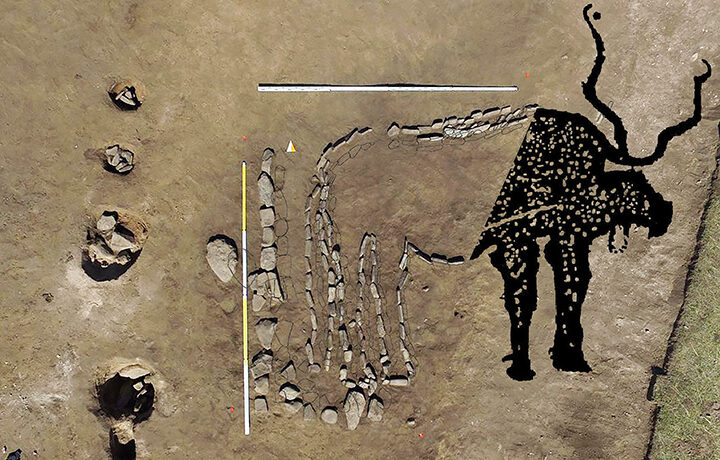
The stone bull was part of an Early Bronze Era burial more than 4,000 years ago, making the geoglyth one thousand years older than England's chalk-cut White Horse, and twice as old as the Nazca Lines in Peru.
Only the backside of the bull with the hind legs and a tail was preserved, the front part was unwittingly destroyed in 1940s by road construction.
This is the first such discovery not only for the Republic of Tuva, but across Central Asia.

'We do see bulls as petroglyphs around Tuva and the neighbouring territories - but coming across the animal geoglyph is a unique discovery for the whole region of Central Asia. We didn't previously find such stone compositions', said head of Tuva Archaeological Expedition, Marina Kilunovskaya.
The expedition united archaeologists from the St Petersburg-based Institute of the History of Material Culture, Russian Academy of Sciences, Krasnoyarsk and the Republic of Tuva.
Members of the expedition hope that the unique bull will be preserved as part of a protected site.




R.C.